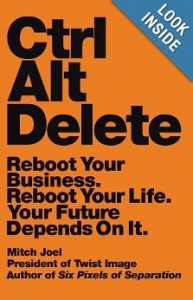Why do 78% of Sales Strategies Fail? … Culture Must Come before Strategy
You have completed your off-site meetings and developed your objectives and strategies…but why will you find out six months in the future your sales strategies are not being executed and you are missing your sales and profit goals? Nothing drives business owners, CEO’s and senior leadership team’s crazy like taking the time to develop a strategic sales plan that no one is executing. Why? What causes this Great Disconnect in Sales Execution? The common cause I have seen over many companies in a variety of industries is a lack of focus on establishing a strong Sales Culture first.
SBI just posted a blog titled why are 78% of Sales Strategies hopeless? It was an interesting article that discussed common execution failures like;
Your strategy is a follow the competitor strategy
Your Strategy is not aligned with the needs of buyers in your market
You have tactics masquerading as strategies
You have no sales strategy
Your sales strategy is not aligned with your product strategy
Your sales strategy is not aligned with your corporate strategy
This post goes on to explain each of the above and if you have not read the post I highly recommend it.
The more I thought about this post the more I felt something was missing, something much bigger, much deeper than all the above combined…what is it?
I was taught years ago: “Culture Comes Before Strategy”
The best way to illustrate what is meant by this is a story I heard in an Alpha class. The speaker describes how he took his son to his soccer match and the referee was not there. The young boys were growing restless so the speaker thought; how hard could this be? (like a lot of CEO’s when planning sales strategies since very few CEO’s, less than 10%, ever carried a sales bag or goal, so how hard could it be?) So he jumped in as referee and the boys started playing. The ball went out of bounds …whose ball is it they asked him, don’t worry about it… play on. One young man tripped the opposing player and everyone was waiting for him to make a ruling but instead he said… play on. (or “just make it happen” in the sales world) The trouble was the boys now lacked the fundamental rules for how to play the game, the boundaries and what is acceptable to do to win. No one was having fun, no one knew the score and a number of players were getting hurt. When the referee finally arrived he ran into the center of the field, blew his whistle and established boundaries and reinforced the rules of play. He called violations to the rules of the game quickly and penalties stopped. The story goes on but the outcome was interesting…the boys had more fun and scored more goals once they understood the rules and boundaries and no one was getting hurt so they played with abandon , striving to win.
So let me ask you…do your sales teams play with abandon because they understand your culture, the boundaries, and the rules in your company?
I hear some past CEO’s and business owners I have served saying; YES! We have a mission statement, a vision statement, they all know our culture! You could say that but you would be wrong in most cases. Just as in my short video about the great disconnect; sales execution your job as a leader is to create a bridge between the sales strategy and what it specifically means to each sales team member. We need to translate what our mission and value statement means and the boundaries it establishes in “how” we achieve our sales goals. If you work with a corporate coach and or consultants they will tell you: Culture is very hard work, it takes a great deal of time and you will not realize a quick benefit. I agree its hard work but disagree adamantly that it will not have a quick benefit.
Your Sales Culture is the foundation for all your strategies, including your sales strategy.
If you fail to build a sales culture you will realize poor sales execution and as high as 78% of your strategies will be hopeless.
If this is something new to you or like many of the owners I have served over the years, you want to argue with me, let me share some fundamental sales culture statements that have served my teams over the years. These rules of the sales game, the boundaries my teams have played in have resulted in measurable wins like;
$ 38 million mechanical security Company grew sales to $79 million in 14 months
$2 million dollar company, needed a turnaround, could not make payroll, within 6 months not only cash positive but investing in new equipment and technology, sold 3 years later for $7 million
$ 4 million dollar plastics company consistently surpassed sales and profit objectives over 13 years and was sold for $ 300 million
We spent six months understanding buyers and developed buyer personas in the durable medical products market, within six years sales grew from $14 million to just shy of $90 million
Another $20 million company realized 40% sales increase in 12 months
A $3 billion company showed a 48% increase in 18 months
One last one for you…another company had sales decline from $150 k per month to $20-$40 k per month when the 2008 recession hit, within 8 months sales grew to over $500 k per month…during the worst part of the recession.
HOW?
Do I have your interest yet? I hope so … This works if you have the courage to implement it.
It starts with establishing the sales culture foundation then developing market focused strategies based on how your buyers buy and the criteria they use to buy, today.
I encourage your team to develop sales culture statements before you develop specific strategies and tactics.
The common sales culture statements that have served many teams over the past 30 years are;
Error in the form of action serving the customer
We will be Agile, and we will learn and get better every day
We focus on results not actions (actions are tactics that lead to results and we will track them as indicators but we are judged by results)
We “serve” our customers, we help them buy, and we do not “sell” them
We work smart not hard
We do not put all our eggs in one basket
We set goals with the end in mind
We embrace “sharpening the saw“
We set goals from the market up, not the boardroom down
We get the right people on the bus, and we make sure they are in the right seats where their gifts can add the most value to the team, focusing on strengths and providing training for weaknesses
We “manage” processes, we “lead” people
Four legged sales calls result in explosive sales growth so they will be a part of our sales culture
None of us are as smart as all of us
We believe the Golden Rule is profitable
We create written sales strategies by region, by salesperson that exceed the objective because we know a goal not written is a dream and we will not succeed at every tactic we develop but we own the goal, the results
We embrace Heretics who challenge : “how we do things around here”as we recognize markets change and companies need to change or get left behind
It’s about “we” so we must tear down silos
We will listen to our markets, buyers, and understand their criteria and buying process
We create sales tools to help buyers buy
My job is to is to help and equip you( sales and marketing) to meet and exceed your objectives, and know when to get out of the way
We win and lose as a team; we are all in this together
Would the above Sales Culture boundaries work in your organization? Why or why not?
Do any of the above statements make you feel uncomfortable? ( if so you need to spend some time investigating why)
If you want and or need to create sales velocity you must establish a strong cultural foundation first. It helps your team know the rules of engagement, what your company holds dear and where the boundaries are. If you fail to establish a strong sales culture before strategy you too will realize 78% of your sales strategies will be hopeless.












